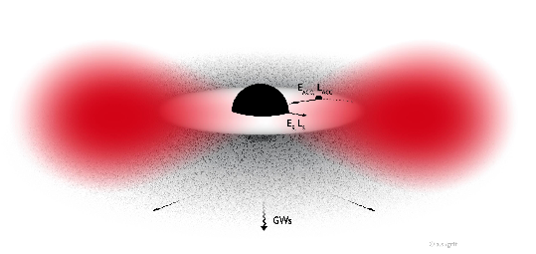My research mainly focuses in strong gravity and in problems lying at the interface between astrophysics, gravitation and particle physics.
In particular I am interested in the role that black holes, neutron stars and the observation of gravitational waves may play to investigate dark matter candidates and test gravity in its most extreme regimes.
A complete list of my publications can be found here.
In particular I am interested in the role that black holes, neutron stars and the observation of gravitational waves may play to investigate dark matter candidates and test gravity in its most extreme regimes.
A complete list of my publications can be found here.
FunGraW - "Fundamental Physics in the era of gravitational-wave astronomy"
From January 2019 until December 2020 I was funded by the European Union's Horizon 2020 research and innovation programme under the Marie Skłodowska-Curie grant agreement No. 792862 (FunGraW - "Fundamental physics in the era of gravitational-wave astronomy" ). The FunGraW project aimed at developing theoretical tools that can help tackling questions such as:
i) Can we use gravitational-wave observations to probe the existence of new particles, such as ultralight bosons, that could possibly explain the nature of dark matter?
ii) Can gravitational waves provide conclusive evidence for the existence of black holes as described in general relativity and rule out alternative models? And to which extent can we use gravitational waves to detect or rule out new physics appearing at the horizon scale?
Check out my article for the Project Repository Journal for more information about the FunGraW project!
i) Can we use gravitational-wave observations to probe the existence of new particles, such as ultralight bosons, that could possibly explain the nature of dark matter?
ii) Can gravitational waves provide conclusive evidence for the existence of black holes as described in general relativity and rule out alternative models? And to which extent can we use gravitational waves to detect or rule out new physics appearing at the horizon scale?
Check out my article for the Project Repository Journal for more information about the FunGraW project!

Jointly with Vitor Cardoso and Paolo Pani we recently published the second edition of a book on the physics of superradiance. This volume gives a unified picture of the multifaceted subject of superradiance, with a focus on recent developments in the field, ranging from fundamental physics to astrophysics. The book covers all our current understanding on the physics of the amplification of waves by a medium, including classical effects such as the Cherenkov effect. The main body of the book deals with superradiance in black hole physics, with important applications in astrophysics and particle physics. Each chapter ends with a list of outstanding open problems and future directions. The second edition corrects a number of typos and, most importantly, adds and updates several sections, reflecting the intense activity in the field in the last years. Current bounds on ultralight fields are summarized in a Table, and will be updated online regularly.



